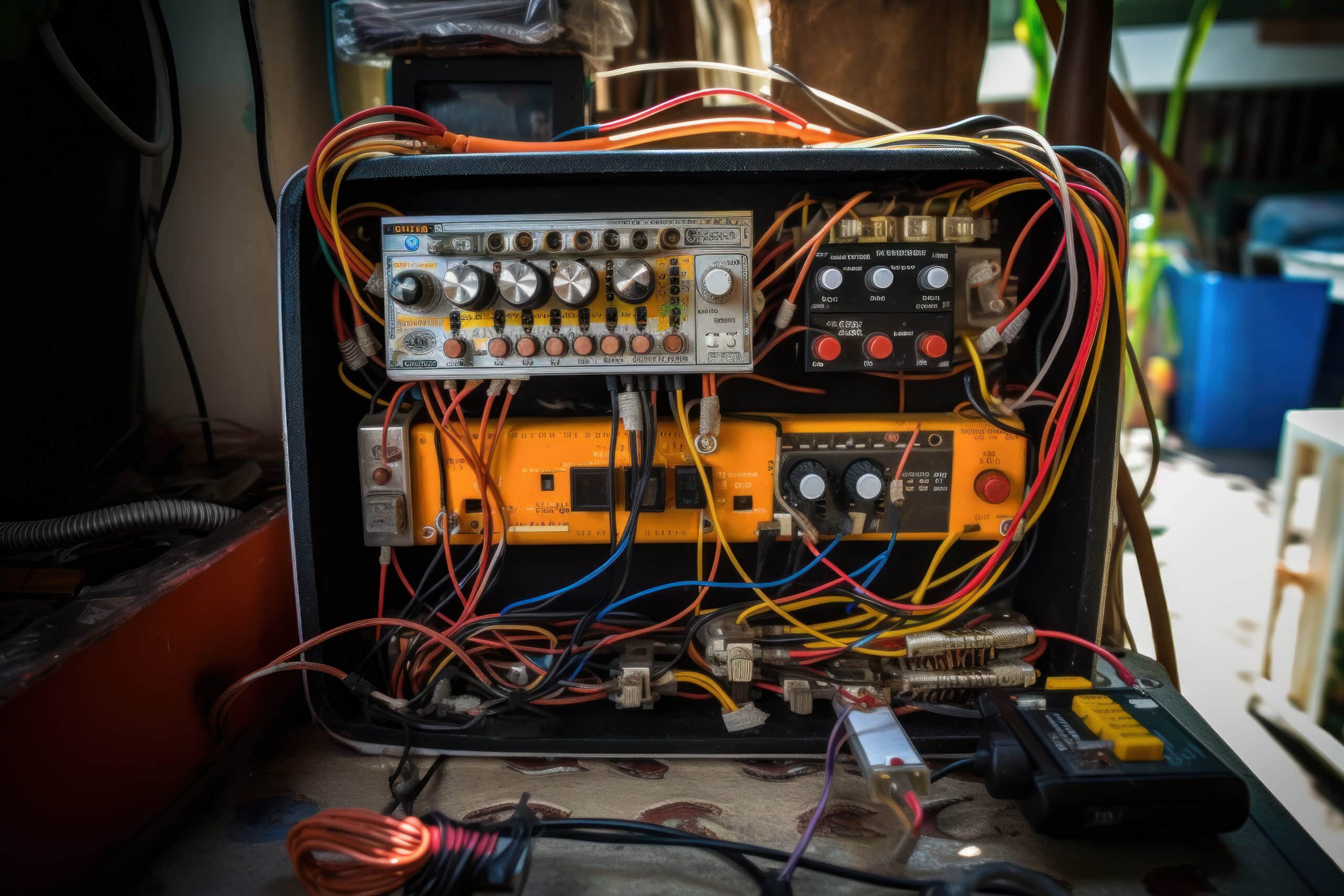How do you wire a generator transfer switch?
Key Takeaways
- Wiring a generator transfer switch is essential for a reliable and safe backup power supply.
- There are two types of transfer switches: manual and automatic.
- When wiring a generator transfer switch, it is important to avoid common mistakes, follow safety precautions, and consult a professional electrician if needed.
Wiring a generator transfer switch is an essential step in ensuring a reliable and safe backup power supply for your home or business. A transfer switch allows you to switch seamlessly between utility power and generator power during a power outage, protecting your electrical devices and ensuring uninterrupted power supply. In this article, we will discuss the best practices for wiring a generator transfer switch, covering the different types of transfer switches, installation steps, safety precautions, and common mistakes to avoid.
Types of Generator Transfer Switches
Before diving into the wiring process, it’s important to understand the different types of transfer switches available:
- Manual Transfer Switch: This type of transfer switch requires manual intervention to switch between utility power and generator power. It is a more affordable option but requires human action during power outages.
- Automatic Transfer Switch: With an automatic transfer switch, the switch detects a power outage and automatically switches to generator power without human intervention. This type of transfer switch provides convenience and peace of mind, especially for those who may not be present during an outage.
Now let’s explore the step-by-step process of wiring a generator transfer switch.
Installation Steps for Wiring a Generator Transfer Switch
Follow these best practices when wiring a generator transfer switch:
- Choose the right type of transfer switch: Select either a manual or automatic transfer switch based on your needs and preferences.
- Install a double-pole breaker at the generator’s subpanel: This allows for a permanent connection to the generator.
- Mount the transfer switch casing: Attach a nail or screw to the transfer switch casing for mounting and securely mount it to the wall.
- Insert the transfer switch into the casing: Place the transfer switch into the casing and secure it.
- Connect the transfer switch cable: Open a knockout on the panel and insert the transfer switch cable. Attach the nut to secure the wire enclosure tightly.
- Connect the generator and main supply: Connect the line wires from the generator to the appropriate terminals on the transfer switch. For a manual transfer switch, connect the generator wires to the emergency power or R terminals, and connect the main supply wires to the N terminals. For an automatic transfer switch, connect the generator wires to the NC and common terminals on the relay switch, and connect the main supply wires to the main terminals.
- Connect the load: Connect the load (your electrical devices) to the bottom terminals of the transfer switch.
It is important to note that the above steps provide a general overview of the wiring process. It is always recommended to consult the specific installation instructions provided by the manufacturer of your transfer switch for detailed guidance.
Safety Precautions
Working with electricity can be dangerous, so it is crucial to follow proper safety precautions when wiring a generator transfer switch:
- Always shut off power at the main breaker before starting any electrical work.
- Ensure that the transfer switch is installed in accordance with all local electrical codes and the National Electrical Code (NEC) by a licensed professional electrician.
- If you are unsure about any aspect of the installation process, consult a professional electrician.
Common Mistakes to Avoid
When wiring a generator transfer switch, it is important to avoid common mistakes that can compromise safety and functionality:
- Neglecting proper installation: Rushing or skipping the installation process can result in unsafe connections and improper grounding. Always follow the manufacturer’s installation instructions and consult a licensed electrician if in doubt.
- Overloading the transfer switch: Connecting more electrical load than the transfer switch is rated for can lead to overheating and malfunction. Calculate your power needs and select a transfer switch with an amp rating that exceeds the total load. Prioritizing essential circuits can also prevent overloading.
- Manual switching errors: Incorrectly switching between grid and generator power manually can cause power surges or backfeeding. Train all users on the proper switching sequence and consider using an automatic transfer switch to eliminate this risk.
- Inadequate ventilation: Placing the generator or transfer switch in a confined or poorly ventilated space can lead to carbon monoxide buildup. Operate generators outdoors in well-ventilated areas and ensure adequate ventilation for the transfer switch enclosure.
- Ignoring maintenance: Regular maintenance is essential to prevent dust accumulation, loose connections, and compromised safety. Schedule routine inspections, tighten connections, and clean the transfer switch as per the manufacturer’s guidelines.
- Overlooking safety labels: Pay attention to warning labels and safety instructions on the transfer switch. Familiarize yourself with all safety labels and diligently follow instructions.
- Not testing the system: Regularly test the transfer switch and backup generator to ensure they function properly during an actual outage. Conduct system tests according to the manufacturer’s recommendations.
- Unsafe fuel handling: Mishandling fuel for the generator can lead to fires or explosions. Follow safe fuel handling practices, store fuel in approved containers, and always shut off the generator before refueling.
- Lack of fire safety measures: Have adequate fire extinguishers and fire safety measures in place in case of a generator-related fire. Install fire extinguishers in accessible locations, train users on their use, and have a fire safety plan.
- Inadequate documentation: Maintain proper records of installation, maintenance, and testing for troubleshooting and safety purposes.
By avoiding these common mistakes and following the recommended best practices, you can ensure a safe and reliable generator transfer switch installation.
Related Websites:
- How to Wire a Generator Transfer Switch – ToolsWeek
- Generators and Transfer Switches: A Comprehensive Guide – WEN Products
- Wire Switch – Generator Grid
- Installing a Generator Transfer Switch: A Step-by-Step Guide – Generator Transfer Switches
- Install a Generator Transfer Switch – Generators Daily
- Generator Transfer Switch Safety: Common Mistakes to Avoid – Generator Transfer Switches
FAQs:
Q: What is a generator transfer switch and why is it important?
A generator transfer switch is a critical component in a backup power system that allows you to safely and seamlessly switch from utility power to generator power during an outage. It ensures that your essential appliances and devices receive power without any interruption, providing you with peace of mind during emergencies.
Q: What are the types of generator transfer switches available?
There are three main types of generator transfer switches: manual, automatic, and combination switches. Manual switches require manual operation to switch between utility and generator power. Automatic switches detect utility power loss and automatically transfer to generator power. Combination switches provide both manual and automatic transfer options.
Q: How can I ensure my safety during the installation process?
Safety is paramount when working with electrical components. Follow these tips to ensure personal safety during the installation process:
– Turn off the main power supply before working on the transfer switch.
– Wear appropriate safety gear, such as gloves and safety glasses.
– Avoid working on the transfer switch if you are unsure about the process and consult a professional electrician for assistance.
Q: What equipment and tools do I need for wiring a generator transfer switch?
To wire a generator transfer switch, you will need the following equipment and tools:
– Transfer switch kit
– Electrical wires
– Wire connectors
– Screwdrivers
– Wire strippers
– Cable clamps
– Electrical tape
Each item serves a specific purpose in the wiring process and ensures a safe and reliable connection.
Q: What is the step-by-step process for wiring a generator transfer switch?
The wiring process for a generator transfer switch involves the following steps:
a) Turn off the main power supply to ensure safety.
b) Mount the transfer switch in a suitable location.
c) Connect the transfer switch to the electrical panel using appropriate wires and connectors.
d) Connect the generator to the transfer switch using recommended wiring methods.
e) Test the setup to ensure proper functioning before relying on it during an outage.
Q: What are some common issues that may arise during the wiring process?
During the wiring process, common issues may include incorrect wiring connections, loose connections, or faulty components. These issues can lead to improper functioning or even damage to the transfer switch or electrical system. If you encounter any problems, refer to the manufacturer’s instructions or consult a professional for troubleshooting assistance.






